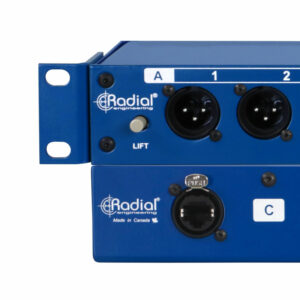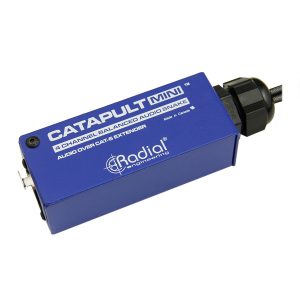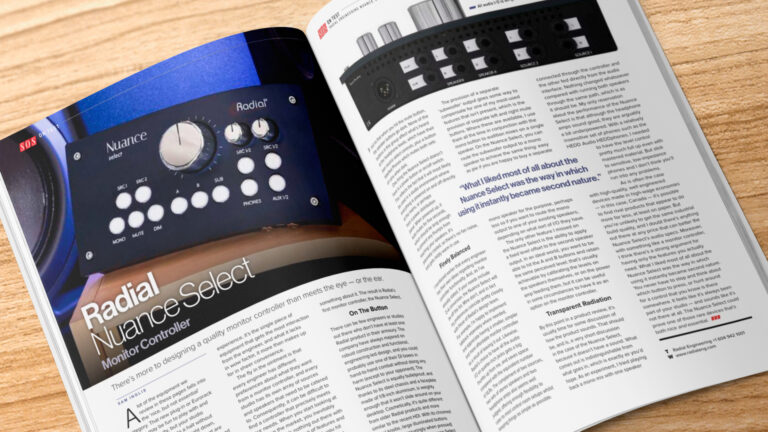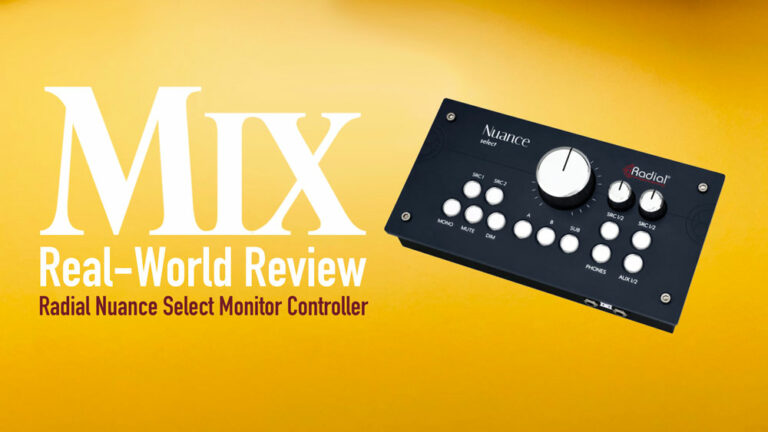The following review by Phil Garfinkel was originally published in the July 2024 Edition of ProSoundWeb. Read the original review Here.
Road Test: Radial Engineering Catapult Rack
Checking out a new 1RU passive audio snake that facilitates sending and receiving 12 channels of analog audio over standard Cat 5/6/7 Ethernet cables
A catapult is an old-time device that’s designed to project objects a long distance with out propellants or explosives. The Catapult Series from Radial Engineering is designed to do the same with audio signals passively via Cat-5/6/7 cable.
For this evaluation, the company recently sent me a Catapult Rack, a new 12-channel, 1RU XLR-to-Ethernet connection box, and like every product from Radial that I’ve seen or used, it has an excellent build quality and attractive graphics.
A while back, I worked with the original Catapult 4, so I wasn’t unfamiliar with the platform. I employed it with a folk duo, three channels total, plugging their microphone cables into the transmit box and bringing out a Cat-5 EtherCON cable. It made for a very visually clean stage and, since it’s all analog, zero latency. A whole lot lighter than a traditional sub-snake as well.

Radial also offers a unit called the Catapult Mini, which provides three I/O choices: XLRM, XLRF and 1/4-inch TRS (which, depending on the application, can either send or receive).
How It Works
With that preface, let’s take a look at the Catapult Rack. As noted, it’s a standard-size 1RU 19-inch rack piece. The build quite sturdy – I have absolute confidence that it could be thrown about by local hands (not recommended) and still work just fine.
Catapult Rack comes in two models, TX (transmit) and RX (receive). This can be a little confusing, because depending on the application, signal can flow in either direction. This makes it useful for feeding satellite loudspeakers as well as corralling microphones.

The difference is the XLR connections. TX has 12 XLRF ports while RX has 12 XLRM ports. The XLRs are in groups of four – each Cat cable can carry four analog signals. I admit, I was hoping that there would be 12 mics on a single Cat path, but alas, it is not to be. This isn’t the fault of the manufacturer at all; it’s simply the nature of analog over Cat cabling.
Along with the XLR ports on the front panel, there are also three ground-lift buttons; each lifts Pin-1 on the four corresponding connectors. The rack ears are reversible, so depending on whether you need entrance or exit outwardly facing, you can easily adapt the units. This, to me, speaks to Radial’s forethought in considering all the ways this product could be used.
Another useful aspect is interconnectivity: the user can interchange any of the boxes in the series, use three of the four channels for sub snakes, and send out to three different zones from the mixer.

The back panel offers six RJ45 EtherCON-enabled connector, a send (or receive, depending), and a through (thru) to go to another Catapult unit. Because it’s Cat-cable based, it can plug into existing Ethernet connections in a building – which makes for some great use cases for corporate gigs and recording studios. (I have a friend who has a studio in New Orleans and he has a bunch of the four-channel units; it really reduces the numbers of wires lying about.)
The units are low profile and light in weight (they come in under four pounds), and to my ear, did not color the sound at all. I know my mics and loudspeakers really well and could hear no discernible difference using the Catapult or plugging the mics directly into my usual stage box.
What’s My Take?
I loved it; I thought of many ways I could use any model of Catapult to clean up the small stage gigs I work. (For example, I do a monthly for the local folk music society here in Portland and it very seldom exceeds 12 inputs.)
The platform also tightens up the cable mess that my band rehearsal space can become. In not-critical applications (like the just-mentioned practice space), standard Cat-5 (shielded if you want/need to send phantom to something) will work. In short, it’s a relatively “cheap and cheerful” way to cable-manage analog audio.
I can also see Catapult being a big hit in the house of worship market; the ease of use and the small footprint of the Catapult Mini would be great for things like cry room sound distribution. Further, any small XLR connection need could be filled (i.e., for powered monitors in a choir loft). For smaller churches with fewer microphones, I can easily see the Catapult Rack replacing a bulky 12-channel copper snake.

And a big shout-out to whomever writes the manuals for Radial – they’re easy to read, very informative, complex enough for the professional to be satisfied yet simple enough for the novice to understand. Well done.
My only real issue is something that’s just a fact and can’t be changed. I wish we could put 12 channels of analog audio across Cat cable; still, three EtherCON cables take up a lot less space than a dozen mic cables.
I advise readers take a look at the manual and see if these boxes offer a better way for a situation they might be facing. I think all Catapult models are all excellent tools to have in a work box, even as a “just in case.”We live sound folks are an innovative bunch, and I really look forward to hearing stories from some of you about the creative ways you use the Catapult platform.









